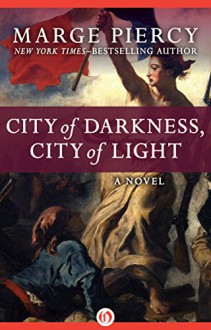
When I was offered this book through NetGalley, I almost laughed. I am generally not a re-reader of books, but for this I made an exception. Years ago, long before Goodreads, I had a simpler system of keeping track of the books I read – I listed them by author in an old unused address book. (here I pause for millenials, who have never heard of an actual, paperbound address book, to google it.) Anyway, I was visiting my parents and, unable to sleep one night, so I grabbed Gone to Soldiers out of the basket my mom kept on the nightstand for guests. Hours later, bleary-eyed, I went to bed, and then, in the morning, asked if I could take the book with me in order to read the second half at home. Of course she lent it to me, and of course, as soon as I finished, I added it to my book. I was young then, so I have absolutely no excuse for this, but it makes me feel good to repeat the story as I age — I went to add it, only to find I had already read it!
This does not in any way reflect on the quality of the story or the lasting value of it. In fact, it is evidence that I have not changed much as a reader over the many years since then — I read a book fully in the moment, and then I promptly forget it, except for some scraps of storyline and sometimes strong feelings on whether I liked or disliked it.
I consider Gone to Soldiers a precursor to other terrific books on World War II, like All the Light We Cannot See and Those Who Save Us. Piercy delivers an epic novel that encompasses so many viewpoints — from the female aviators delivering planes in the US, to the soldiers in the trenches in Europe and beyond. There is plenty of action, along with some racy romance to liven things up without being inappropriate. For its time, it seems right on the money even now, almost more diverse than many books today. I read it on the kindle, because even though I enjoy a nice meaty book, it’s a lot lighter than having to heft the 800-page version you can buy in the store.

 Log in with Facebook
Log in with Facebook 








